5 must-see cars from the Geneva Auto Show
From hypercars to station wagons, these are the cars worth salivating over
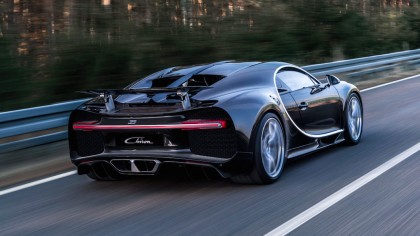
Welcome to Geneva
The Geneva Auto Show opens up to the public later this week, but automakers aren't waiting till then to debut new vehicles, teasing and announcing new cars left and right. Highlighting the show is the Volkswagen Auto Group (VAG), with major salacious debuts from Bugatti and Lamborghini.
Koenigsegg is using the opportunity to show off the production version of its latest hypercar, while Volvo and Kia have new station wagons for practical-minded folks, like myself.
Regardless of price, here are the must-see debuts that caught my attention.
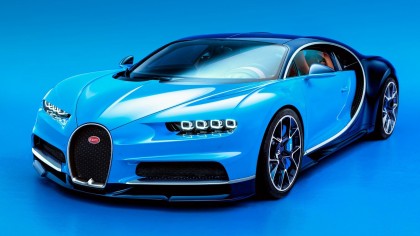
Bugatti Chiron
The Bugatti Veyron was the fastest street-legal, production car at the time of its debut a decade ago. It's insanity was propelled by a quad-turbocharged 8.0-liter W16 (it's like two V8 engines joined at the crank) that produced about 1,000 horsepower (hp) to start. It set top speed records at 253 mph at launch and was refined to max out at 267.7 mph
Bugatti tuned the marvelous W16 engine to 1,200 hp by its retirement, so its successor has to be better, faster and even more insane in every way.
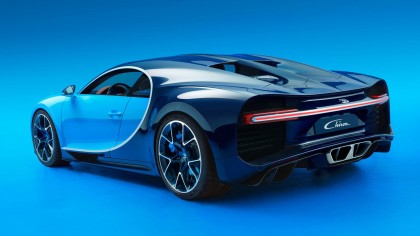
Meet the Chiron, Bugatti's latest showcase of madness. The Chiron takes the quad-turbocharged 8.0-liter W16 motor and turns up the power to 1,478 hp and monstrous 1,180 pound-feet (lb.-ft.) of torque. Nearly 1,500 hp is achieved without the use of hybrid technology; it's a pure-bred machine.
Bugatti claims a top speed of 261 mph for the Chiron, which is faster than the Veyron at its debut, but not quite as fast as the special edition Veyron Super Sport. But let's be honest, who cares? The Chiron is a monster.
The Chiron can go from 0 to 186 mph in 13.5 seconds, which is half the time it takes an American muscle car to reach 150 mph. Gratuitous use of carbon-fiber ensures the chassis is stiff, but the Chiron tips the scale at 4,400 lbs, which is how much a typical minivan weighs.
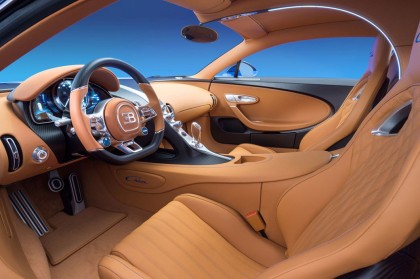
Inside, the Chiron has a simple interior with a mechanical speedometer sandwiched between two LCD's. The car only seats two, so I can't talk my wife into one for a family car, unfortunately. Bugatti doesn't mention whether the Chiron will have Android Auto or Apple CarPlay support, but I don't think the infotainment system will hold back prospective buyers.
Regardless of smartphone connectivity, the Chiron is a technological marvel and extremely drool-worthy. Just look at it - it's beautiful.
Bugatti plans on keeping the Chiron exclusive with a production run of 500 units, but you can pre-order your Chiron for $2.6 million (about £1.9 million, AU$3.6 million).
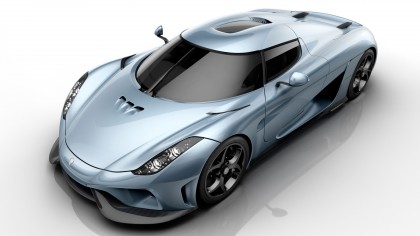
Koenigsegg Regera
If the $2.6 million price tag for the Bugatti Chiron is too hard to stomach, Koenigsegg debuted the production version of its luxurious, but still-insane Regera hybrid hypercar. For a more affordable $2 million (about £1.4 million, AU$2.8 million), the Regera can reach 186 mph in a mere 10.9 seconds, a full 2.5 seconds faster than the Chiron, so it's a much better bang-for-the-buck.
The insanity is driven by a 5.0-liter twin turbo V8 that puts out a mere 1,100 hp on its own. Because 1,100 hp isn't enough for a hyper car, Koenigsegg slaps an electric motor to each wheel and backs it with an 800-volt, 4.5 kWh battery pack, that combines with the internal combustion engine (ICE) for 1,500 hp. And, like a Glade air freshener, you can plug it in to charge, too.
While I was never fond of the Veyron, and to an extent, the Chiron looks, the Regera is gorgeous inside and out.
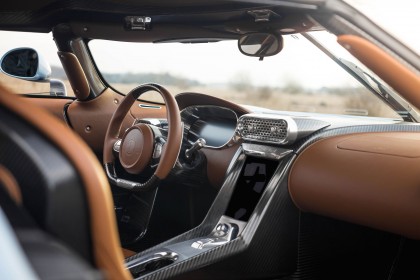
Inside, the Regera packs a 9-inch infotainment screen and LCD gauge cluster. The infotainment system supports Apple CarPlay, but not Android Auto, unfortunately. Wi-Fi connectivity is included, but the Regera is stuck with a 3G internet connection that's not quite as fast as the car itself.
There's a 360-degree camera system that can stitch together images for a bird's-eye view of the car, which is a must have, considering car has very little rear visibility.
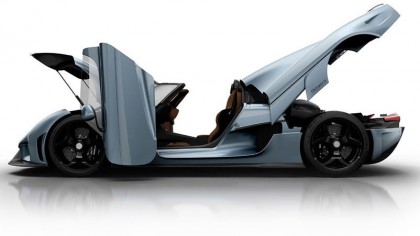
Koenigsegg claims the Regera is the first roboticized production car, which uses hydraulics that open and close every body part imaginable. The best part of this is the ability to open the doors, hood and trunk from the key fob or smartphone app.
Here's how the use of the robotics feature plays out in my head: you pull up to a car meet or car show, get out, walk around and wait for the crowd of people to surround your vehicle. When there's a crowd, you press the key fob buttons to open everything and amaze all who've gathered. That alone is enough for me to lust for the Regera over the Chiron.
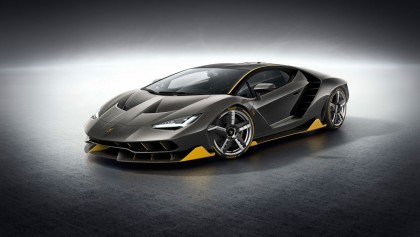
Lamborghini Centenario
If the Bugatti Chiron's 500 unit production run isn't quite exclusive enough for you, or the Koenigsegg Regera is still out of your budget, the Lamborghini Centenario is the supercar for you. Lamborghini plans to produce 40 total units, with an even split of coupes and topless roadsters.
For about $1.9 million (about £1.4 million, AU$2.6 million), you get exclusivity and the most powerful V12 motor ever built by Lamborghini. The V12 is good for 770 hp, without the aid of turbochargers or electric motors, and revs up to 8,600 eargasmic revolutions per minute (RPM). Just the thought of that harmonious exhaust note gives me goosebumps and other inappropriate thoughts.
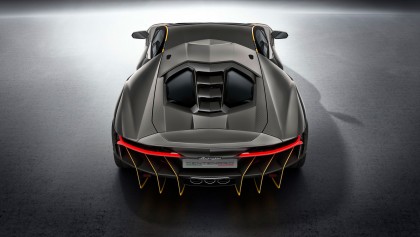
Unfortunately, the Centenario isn't as fast as the Chiron and Regera. The Centenario takes over twice as long as the Regera to reach 186 mph – 23.5 seconds. But, on a positive note, it reaches 62 mph in 2.8 seconds, which is plenty fast.
Inside, there's an LCD gauge cluster and 10.1-inch touchscreen infotainment system with navigation, web browser and internet connectivity. Apple CarPlay is supported, too.
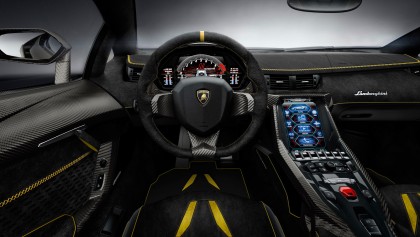
The infotainment system also provides detailed telemetry data so you can see and record speed, lap times and G-forces. Check the box for the two interior cameras option and you can record your driving experience, too.
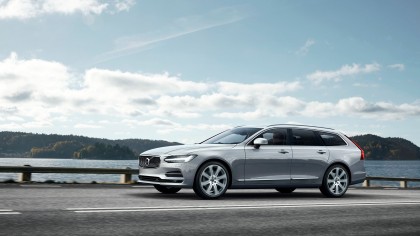
Volvo V90
Volvo is on a roll with knock-out, gorgeous vehicles. It started with the XC90 and followed up with the S90 sedan. But the Volvos I've lusted after weren't sedans and CUVs - it was the long-roof station wagons.
Now, take the stunning S90 sedan, slap a long-roof on it, and we have the new V90, a proper station wagon (or estate, for you Brit's.). I'm a big fan of wagons for their practicality while maintaining the fun-to-drive nature of a car, if you haven't noticed.
There's no doubt the V90 is a Volvo, with its giant LED taillights that extend past the height of the D-pillar. The car only seats five, unfortunately. I can still hope for a third-row jump seat option, but that feature was abandoned by all modern cars, except Mercedes-Benz in the E350 wagon.
Volvo's are all about safety, too, and the V90 will not disappoint. Like its sedan counterpart, the V90 comes standard with Pilot Assist driver assist technology, that includes adaptive cruise control, lane keep assist, large animal detection and automatic emergency braking technologies.
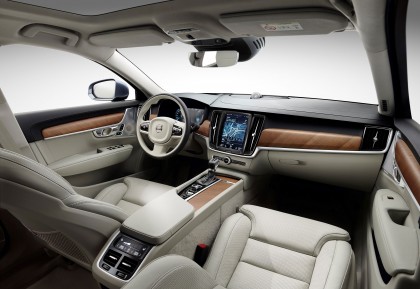
The car can drive semi-autonomously up to 80 mph, with autonomous steering, acceleration and braking. However, you'll still have to change lanes manually, unlike Tesla's auto pilot technology or the next-generation Mercedes-Benz E-class. A 360-degree camera, blind spot monitor and automatic parking park assist technologies are optional, too.
The interior is to die for, with plenty of leather covering every surface, a 9.3-inch touchscreen, installed in portrait mode, and comfortably-shaped seats. The infotainment system is the same Volvo Sensus system in the XC90, complete with Apple CarPlay support in tow.

Powering the V90 is a selection of turbocharged four cylinder gasoline or diesel engines. The base engine is the turbocharged T5 with 254 hp, exclusive to front-wheel drive models. Opting for the T6 adds a supercharger to the turbocharged four cylinder, boosting power to 320 hp and adding all-wheel drive.
If that's not enough power, there's the range-topping hybrid T8 that straps on a 9.2 kWh battery and electric motor that boosts combined power output to 407 hp. D4 and D5 Diesel engines will be available as well, but those will most likely not be available in the US.
Volvo hasn't announced pricing yet, but since the V90 is a flagship, it won't come cheap.
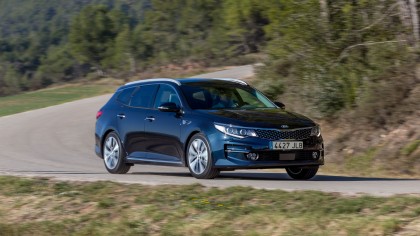
Kia Optima Sportswagon
If the Volvo V90 ends up giving you sticker shock, Kia announced its first mid-sized station wagon, a vehicle segment that Americans continue to ignore for taller and smaller CUVs. The new Optima Sportswagon takes everything I loved about the Kia Optima and adds a long-roof for more cargo space and a taller trunk opening.
Aside from the long-roof, the Optima Sportswagon features the same infotainment system with Android Auto support as the sedan. However, Kia does tout Apple CarPlay support, which means the feature is almost ready and should reach American Optima's as well.
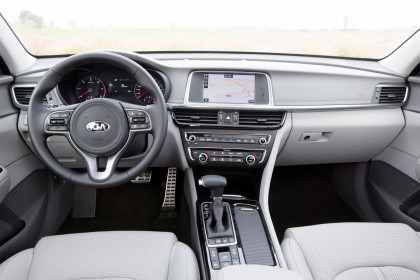
Expect the same automatic emergency braking, adaptive cruise control, blind spot monitor and 360-degree camera driver assists to be available as the sedan. Kia does offer a few extras not available in North American Optima's, like lane keep assist, parallel and perpendicular parking assist, and engine start/stop technology.
Expect the Kia Optima Sportswagon to have similar pricing to the sedan, which starts at £28,895 ($40,000 or AU$56,000). Kia has no plans to offer the Optima Sportswagon in North America, unfortunately.
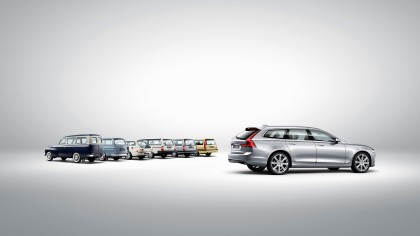
Wrap-up
It's easy to be wowed by the Bugatti Chiron or Koenigsegg Regera, which are marvelous engineering feats, but I'm a practical guy that appreciates attainable cars, so my favorite debut in Geneva is the Volvo V90 station wagon.
It's a car that encompases everything that defines Volvo as a brand to me: safety, turbocharged power, simplistic design and station wagons. I'm a major fan and wish more Americans would buy them so manufacturers would crank them out like it was 1986, but alas, the buying public favors CUVs.
Nevertheless, the Volvo V90 is probably the best luxury wagon that'll ever be made. It doesn't have the insane tire-shredding capabilities of a Mercedes E63 AMG wagon, but it checks off the right boxes to be my perfect daily driver and family car.
Now, you probably think I'm crazy for fawning over a station wagon instead of the Regera or Centenario, but the V90 is a car I can one day afford, and for me, I like to dream realistically.